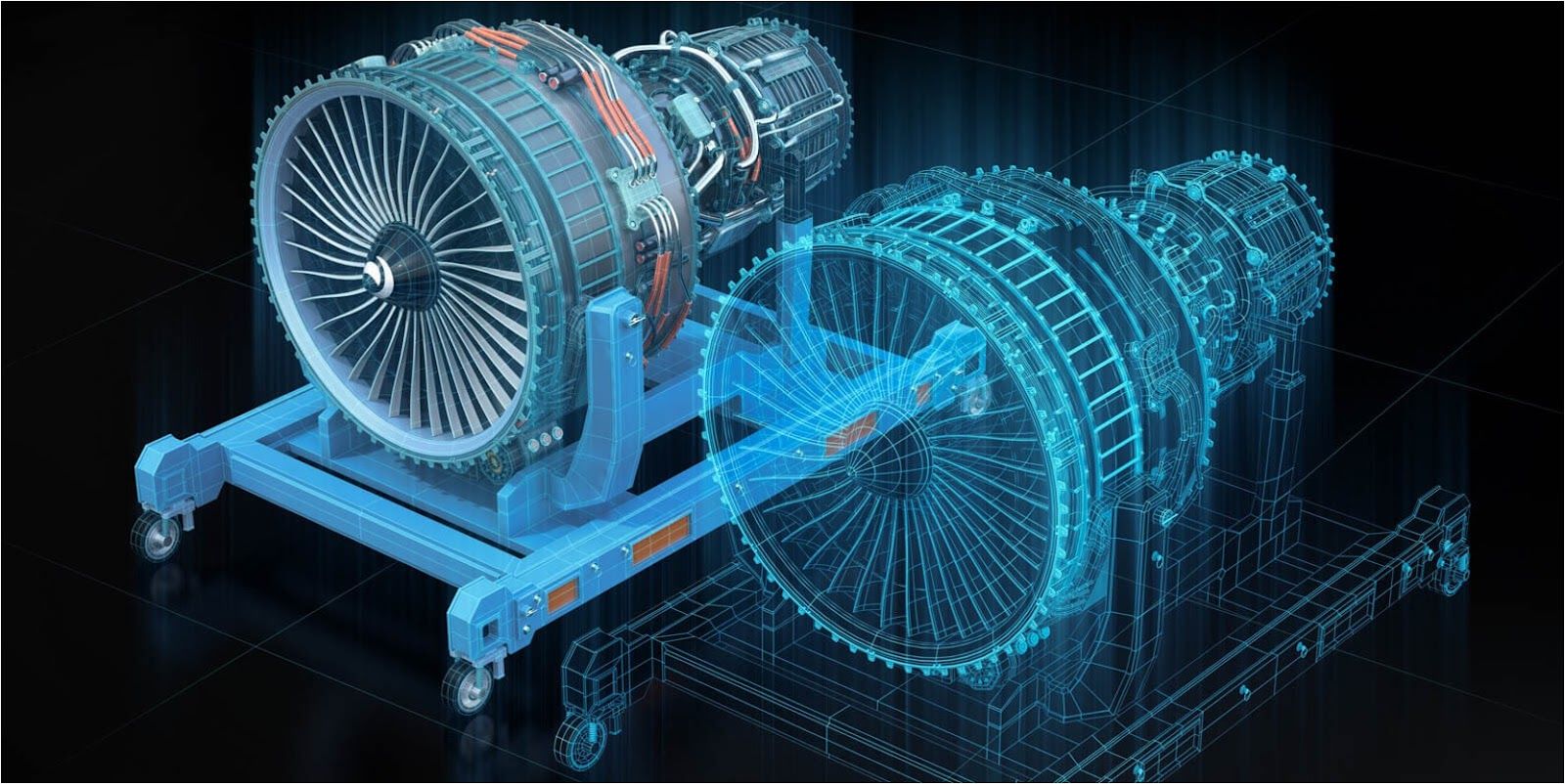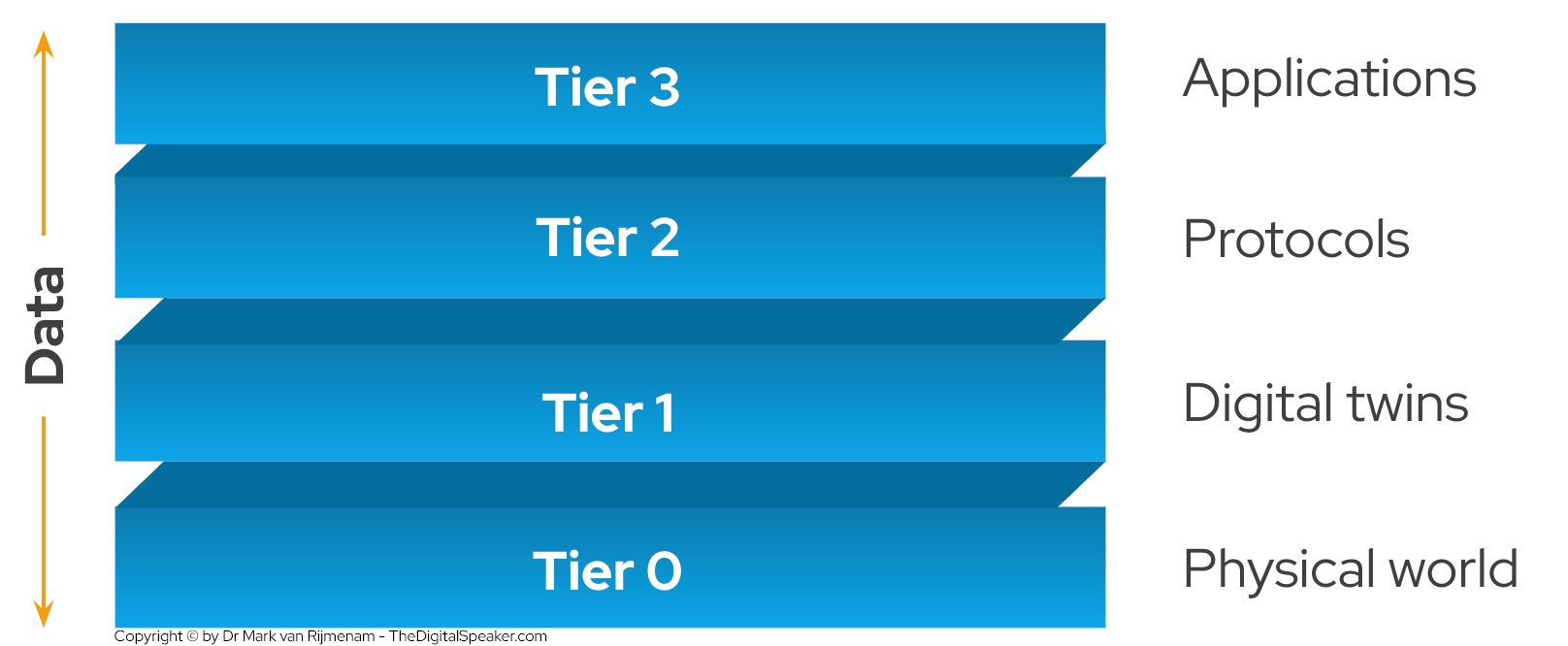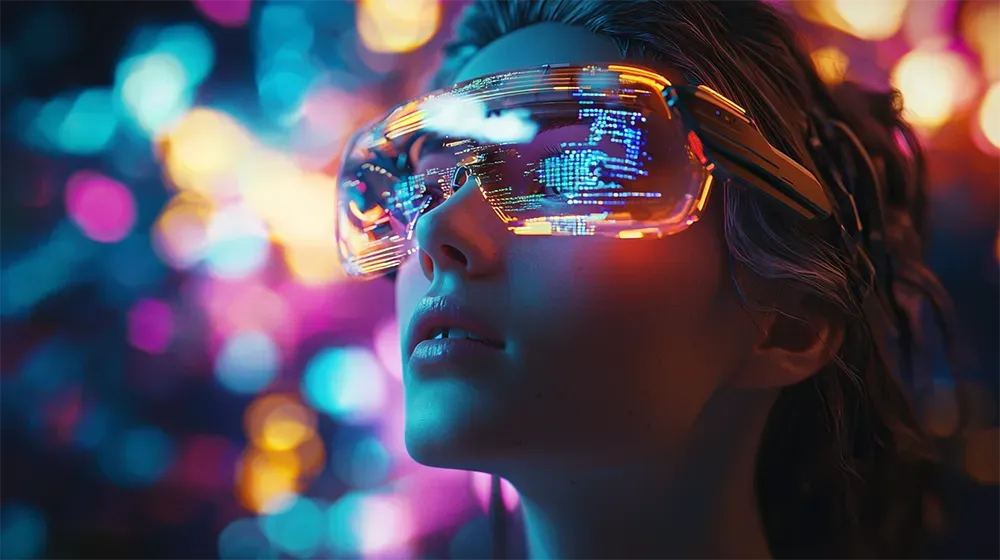Why Digital Twins Are One of the Building Blocks of the Metaverse

While Zuckerberg’s announcement to refocus the company on the metaverse brought the metaverse into the limelight of the general public, it also caused industrial companies to become wary of talking about the metaverse because they don’t want to be associated with Facebook.
However, the metaverse is not only a platform to connect with consumers, play your favourite game, shop in the metaverse, or do business and collaborate. It is also all about simulating the physical world inside the digital world, which can then be experienced using VR or AR to optimise the physical world. Digital twins can be considered one of the building blocks of the metaverse, augmenting the physical world and making it accessible from the digital realm.
“Digital twins are a virtual representation of an object or system that spans its lifecycle, is updated from real-time data, and uses simulation, machine learning, and reasoning to help decision-making.” - IBM.
Digital twins enable us to take our physical world and re-create it in the digital realm, down to the most microscopic detail. With the help of advanced sensors, AI, and communication tech, these replicas will mimic physical objects, including people, devices, things, systems, and even places, in a digital space.
The virtual model accurately reflects the real object or system through sensors that actively relay data linked to its functionality and environment to its digital counterpart in real-time. Any change in the physical object or system will lead to a change in the digital representation and vice versa. All this data will enable new processes and services, such as predictive maintenance, which uses data analytics to predict when a machine is about to break down, so it can be fixed before breaking down. As such, digital twins are a crucial component of the enterprise metaverse.
4 Tiers of the Metaverse
If the physical world can be considered Tier 0 of the metaverse, digital twins are Tier 1, which some would consider the (Industrial) Internet of Things. All the protocols running on top of that are Tier 2. Above that, there can be many layers of applications, either in the 2D virtual world (e.g., mobile apps), virtual reality, or using augmented reality, that interact with either of these layers, which can be considered Tier 3.
This might sound counterintuitive (why place digital twins as a tier prior to protocols and applications?), but the sensors of digital twins collecting the raw data enable the applications, and to have universal interaction with those applications, we would require open standards and protocols.
The (raw) data moves between these layers, is analysed by the applications and fed back to the digital twin for additional insights. Combined, this would deliver value to the physical and digital worlds.

The Metaverse is all about Data
Data is what makes digital twins dynamic digital twins. The more protocols, as in global standards, that exist, the more value the applications can deliver to the global economy. For example, a city can be made smart by using digital twins. By ensuring that the data of those various digital twins are easily accessible using universal standards, anyone can create applications that would deliver value to cities, businesses, and inhabitants.
All the applications in tier 3 delivering value can be perceived as lenses, where each lens provides the user with a different perspective or experience of reality. These lenses can only exist if the data exists, so there is no metaverse without data.
These lenses can be for entertainment, offering the user digital art linked to a certain physical location. It can be a monitoring application of a solar farm that allows the user to trade its energy using crypto. It can be a communications lens for users to join a hybrid meeting using VR. It can be a predictive maintenance lens of an aeroplane's jet engines or an electrical lens for city officials to manage their smart city. There can be countless applications and capabilities or lenses. Some will be accessible to all, others only after payment and others only with the proper credentials. Ideally, all are secured on the blockchain.
Complexity Levels of Digital Twins
Regarding tier 1, there are different levels of complexity for digital twins, each increasing in data generated and insights delivered. The simplest variant of a digital twin is the digital representation of a single object, for example, a connected wearable, a simple robot, or a machine in a factory. These product digital twins can be used to design new products by analysing how a product performs and by enabling digital prototyping.
One level up are production digital twins that simulate a process, e.g., a manufacturing process, consisting of multiple product digital twins. The more complex performance digital twins capture data from a system of objects, such as an aeroplane or an entire (dark) factory.
The next level comprises entire systems of systems, such as supply chains that cover the globe or city-scale digital twins. The most complex of them is the digital twin of the earth, as developed by the European Space Agency (ESA), which aims to build a dynamic digital replica of our planet.
First and foremost, digital twins enable the optimisation of processes through their synchronised systems in the digital and real world. The various applications of tier 3 can be used to monitor and analyse a process or system, run simulations to optimise its physical counterpart, or collaborate with multiple people to prototype and create new physical products.
Digital Twin Visualisations
No matter how simple or complex, each digital twin offers value and benefits to its users. The value and level of collaboration possible depend on the digital twin's visualisation level. These can be simple visualisations—descriptive, predictive, or prescriptive analytics—that provide the user insights into the status of the digital twin and give the ability to change levers to adjust its behaviour.
Visualisation can also be more advanced 2D visual representations of the digital object or system, such as AutoCAD models used by architects or engineers. These advanced 2D representations enable users to view the digital twin from different angles and collaborate remotely, to further improve or develop either the digital twin or the physical counterpart.
The most advanced visual representation is a detailed 3D digital replica that can be explored or interacted with within virtual reality or using augmented reality. 3D digital representations enable users to explore the digital twin from different perspectives, drill deep into its inner workings, see real-time insights from its sensors collecting data, make changes that reflect in real-time in the physical world, or collaborate with others to design and create a digital prototype of a future physical object, such as a car, or fix a physical problem remotely. The more advanced the visual representation, the more value can be achieved.
Final Thoughts
The enterprise metaverse might very well become bigger than the metaverse used to play and socialise; after all, companies need to collaborate and innovate, and digital twins will play a crucial role. While it might be a while before you can operate a factory from a comfy beach chair, already digital twins play a vital role in moving the world into Industry 4.0. This digitalisation of equipment, factories and systems of systems will only increase and using AR and VR will revolutionise how we interact with the physical world.
If you want to know more about digital twins in the metaverse, you can pre-order my new book now: Step into the Metaverse: How the Immersive Internet Will Unlock a Trillion-Dollar Social Economy.





